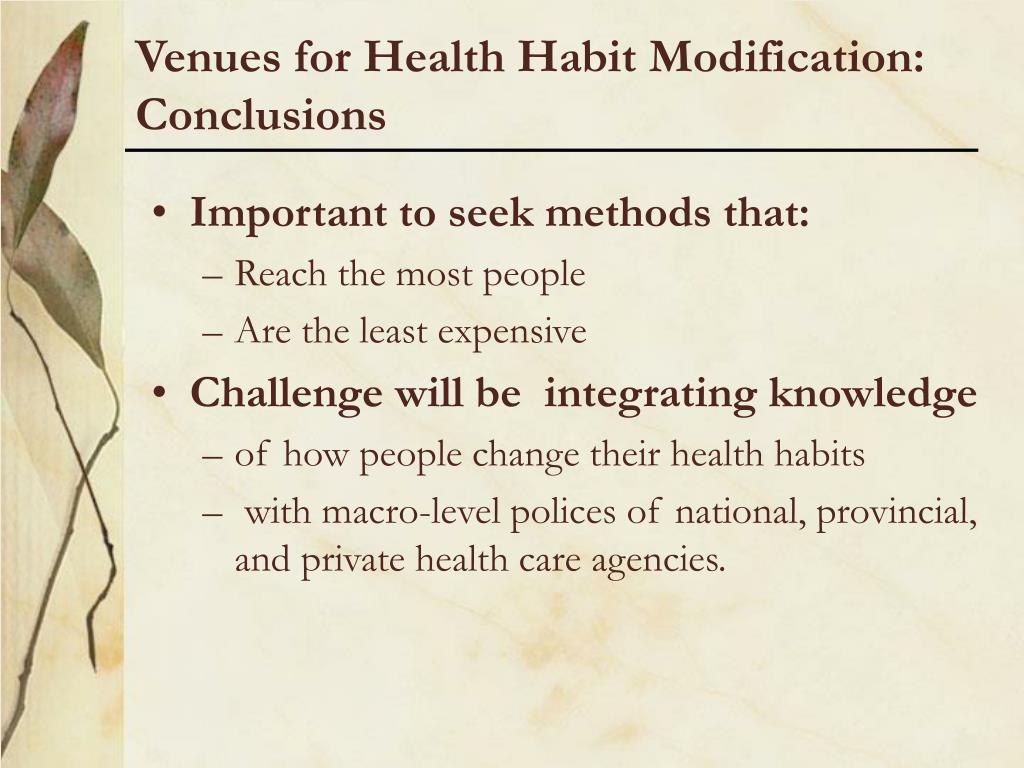Social Engineering refers to modifying the environment in ways that affect an individual’s ability to
practice a health behavior. Social engineering solutions include providing purified water to people or
banning smoking in public places and banning drugs like cocaine and heroin, lowering the speed limit,
helmet safety laws, preventing advertising of tobacco and alcohol, regulations regarding seat belt use. In
this case the individual is left with very little choice or responsibility, the behavior becomes the default
behavior.
At the level of the nation or the community – legislation can be passed to make the environment
healthier and help people lead more healthy lives. The media can be used to influence people towards
making healthier choices especially children who are suggestible and vulnerable to advertising.
Information resources on health can be made available to all. Facilities that facilitate development of
health habits such as open spaces and parks that encourage people to exercise, relatively cheap fruits
and vegetables which are organic, minimal marketing of tobacco and alcohol. And most important of all,
the provision of good health care for all.
Venues for Health Habit Modification
Work Site Interventions
•Optimal site for reaching adults
–70% are employed
•On the job health promotion programs
•Structured environment to promote health
–Banning smoking at the workplace
–Healthy meals served in employee health clubs.
•Special incentives may be given for successful modification of behaviors
Community-Based Interventions
•Approaches may include:
–Door-to-door campaigns
–Media blitz about health risks
–Interventions in community institutions
•Large-scale expensive programs have been controversial
–North Karelia project, Multiple Risk Factor Intervention Trial, Stanford Heart Disease Prevention
•More modest efforts are likely to continue
The Mass Media
•Benefit
– large numbers of individuals can be reached at once
•Generally modest attitude change, but less long-term behavior change occur
•Most effective in alerting people to health risks that they would not otherwise have known about
•Can have a cumulative effect on changing values associated with health practices
The Internet
•Promising but underutilized tool
•Health screening Web site
–Could inform about health habits that a person should be undertaking
•Enables researchers to
–Recruit participants
–Collect data related to health habits
How Effective are Health Education Campaigns?
–Campaigns that merely inform people of the hazards of certain behaviors (e.g., anti-smoking messages) are typically ineffective
–Multifaceted campaigns that present information on several fronts are generally more effective than “single-shot” campaigns
Message Framing
•Gain-Framed Message
–A health message that focuses on attaining positive outcomes, or avoiding undesirable ones, by adopting a health-promoting behavior
•Loss-Framed Message
–A health message that focuses on a negative outcome from failing to perform a health-promoting behavior
Loss-Framed Fear Appeals
•Scare tactics that arouse fear may backfire and decrease a person’s likelihood of changing his or her beliefs and behavior
•A key factor in determining in the effectiveness of threatening health messages is the recipient’s perceived self-efficacy regarding the behavior

Candela Citations
- Venues For Health Habit Modification. Provided by: Course Hero. Located at: https://www.coursehero.com/file/pjjdvhf/Venues-for-Health-Habit-Modification-Work-Site-Interventions-Optimal-site-for/. License: All Rights Reserved
- Social engineering. Authored by: Fishbein, M., & Ajzen, I.(1975). Belief, attitude, intention and behavior: An introduction to theory and research. Reading, MA: Addison-Wesley. Marks, D.F., Murray, M., Evans, B., Willig, C., Woodall, C., & Sykes, C. (2008). Health Psychology (2nd ed). New Delhi: Sage. Taylor, S. E. (1995). Health Psychology (3rd ed). New York: McGraw Hill.. Located at: https://nptel.ac.in/content/storage2/courses/109101007/downloads/LECTURE_NOTES/Module%2019/lec31.pdf. License: Public Domain: No Known Copyright
